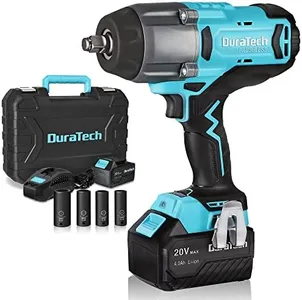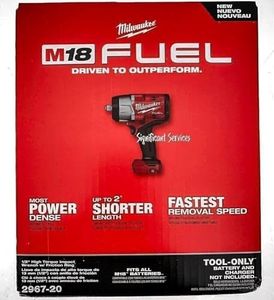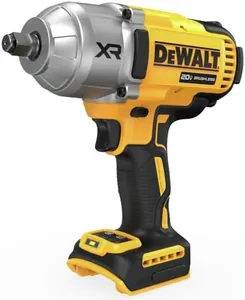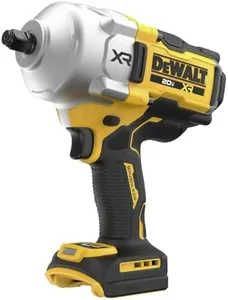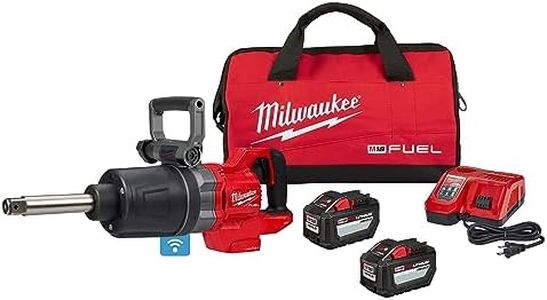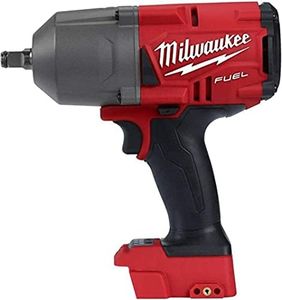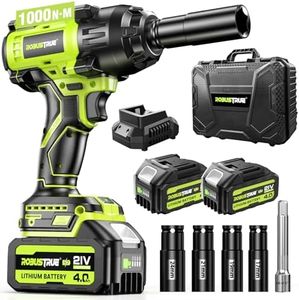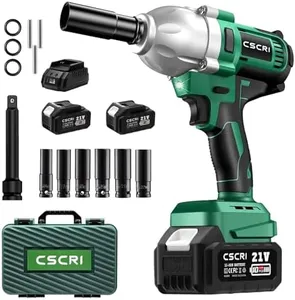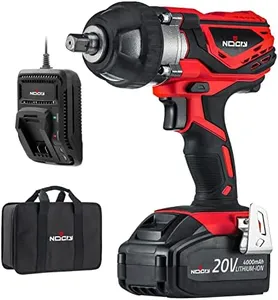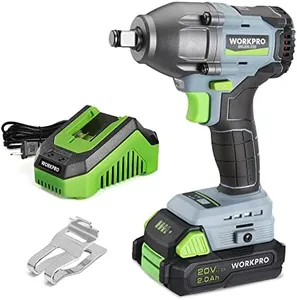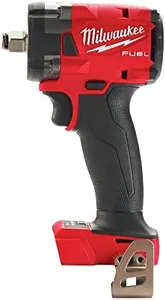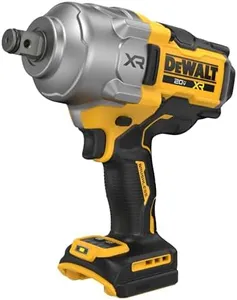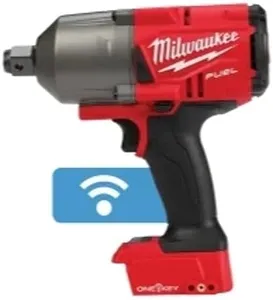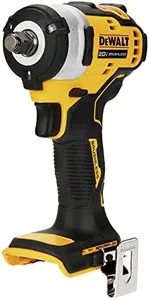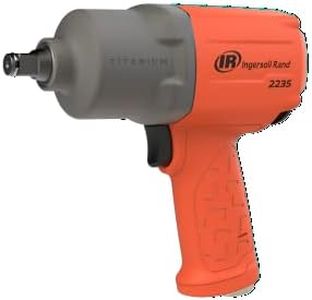10 Best Impact Wrenches 2025 in the United States
Our technology thoroughly searches through the online shopping world, reviewing hundreds of sites. We then process and analyze this information, updating in real-time to bring you the latest top-rated products. This way, you always get the best and most current options available.

Our Top Picks
Winner
Milwaukee 2967-20 M18 Fuel 18V 1/2" High Torque Impact Wrench
Most important from
998 reviews
The Milwaukee 2967-20 M18 FUEL 1/2" High Torque Impact Wrench is a powerful tool designed for users requiring high torque capabilities in their tasks. With an impressive torque output of up to 1,100 ft-lbs for fastening and 1,600 ft-lbs for nut-busting, it excels in heavy-duty applications. The brushless motor contributes to its efficiency and longevity, making it a reliable choice for both professionals and serious DIYers. Weighing in at 5.94 pounds and measuring 7.6 inches in length, it strikes a balance between power and portability, although some users might find it slightly heavier compared to non-brushless alternatives.
One of the standout features is the AUTO SHUT-OFF control, which limits torque to 50 ft-lbs for hand-tight fastening. This helps prevent overtightening, making it suitable for delicate tasks where precision is key. Additionally, the Bolt Removal Control in Mode 4 enhances usability by allowing full torque output initially, then reducing RPMs after loosening the bolt to prevent fastener drops, which can be a real convenience on the job.
This product is sold as a tool only, meaning it does not come with batteries or a charger. This could be a downside for users who don’t already own compatible Milwaukee batteries. Also, while the weight and ergonomic design are manageable for most, those with smaller hands or less upper body strength might struggle during prolonged use.
Most important from
998 reviews
DEWALT 20V MAX Cordless Impact Wrench, 1/2 in., Bare Tool Only (DCF900B)
Most important from
1737 reviews
The DEWALT 20V MAX Cordless Impact Wrench (DCF900B) is a robust tool designed for a wide variety of fastening applications. With a maximum fastening torque of 1030 ft-lbs and a breakaway torque of 1400 ft-lbs, it delivers powerful performance suitable for demanding tasks. The 1/2 inch drive size is standard and versatile, making it compatible with a wide range of sockets. Being battery-powered, it provides mobility and convenience, though it's important to note that the battery is sold separately.
The impact wrench features a 4-mode speed setting and a variable speed trigger, allowing for better control in different applications. Additionally, the Precision Wrench control helps prevent overtightening and fastener run-off, which can be beneficial for both novice and experienced users. The BATTERYGUARD feature aims to reduce wear and tear on the battery, enhancing its longevity. An on-tool LED work light is included to illuminate dark workspaces, which is a helpful feature in low-light conditions.
Weighing 7 pounds, the tool is relatively heavy, which may lead to fatigue during extended use, but the ergonomic design aims to offset this to some extent. The plastic construction may not be as durable as metal alternatives, and the absence of an included battery adds to the cost. It comes with a 3-year limited warranty, 1-year free service contract, and a 90-day money-back guarantee, providing peace of mind. This tool is ideal for both professional and DIY enthusiasts looking for a reliable and powerful impact wrench.
Most important from
1737 reviews
DEWALT 20V MAX Cordless Impact Wrench, 1/2" Hog Ring, High Torque, Brushless, Bare Tool Only (DCF961B)
Most important from
476 reviews
The DEWALT 20V MAX Cordless Impact Wrench is a powerful tool for heavy-duty tasks, boasting an impressive 1200 ft-lbs of max fastening torque and 1750 ft-lbs of max breakaway torque. This makes it well-suited for challenging applications like working with large pipe-flanges and wheel lugs. Its 1/2-inch drive size is standard, ensuring compatibility with a variety of sockets. The power source is a 20V lithium battery, which is not included, so you’ll need to purchase that separately.
This model stands out with its three speed settings and precision wrench mode, helping to prevent overtightening and fastening run-off, adding to its versatility and ease of use. The built-in LED work light is a great feature for working in low-light conditions. However, at 8.4 pounds, it is on the heavier side, which might make prolonged use a bit tiring.
Additionally, since it's sold as a bare tool, you’ll need to factor in the cost of the battery and charger. Despite these considerations, its high torque and additional features like speed settings and LED light make it a robust and reliable choice for those needing a high-performance impact wrench.
Most important from
476 reviews
Buying Guide for the Best Impact Wrenches
Choosing the right impact wrench can make a significant difference in your work efficiency and ease. Impact wrenches are powerful tools used to tighten or loosen bolts and nuts quickly and with minimal effort. They are commonly used in automotive repair, construction, and various DIY projects. To find the best impact wrench for your needs, it's important to understand the key specifications and how they relate to your specific requirements.FAQ
Most Popular Categories Right Now
